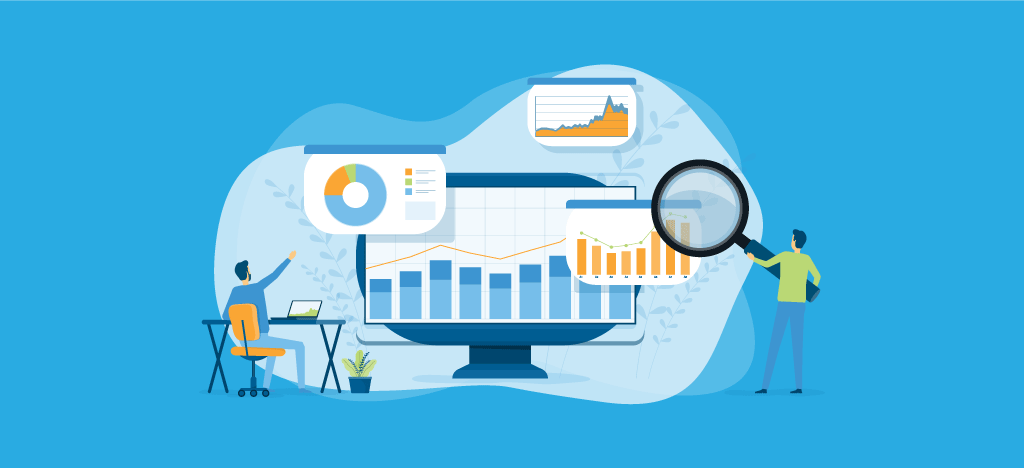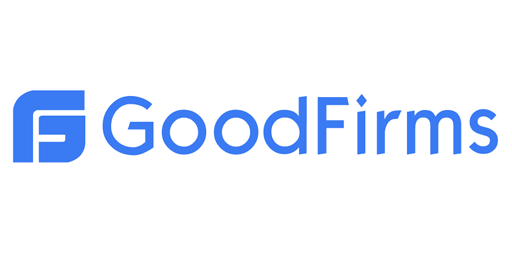Best Tools and Software for Data Analytics in 2024

Data Analytics has become a cornerstone of modern business strategy and operational efficiency in 2024. The ability to sift through massive amounts of data and extract meaningful insights is not just an advantage; it’s a necessity for staying competitive. With this critical need, organizations are turning to the best tools and software for data analysis in 2024 that offer comprehensive solutions.
From global enterprises to nimble startups, these tools are being leveraged across industries to enable descriptive, diagnostic, predictive, and prescriptive analytics. They are also pivotal in handling big data, real-time analytics, and text analytics. Whether it’s improving customer experiences, optimizing supply chains, or predicting market trends, the right data analytics tool can turn raw data into a valuable asset for any organization.
1. Microsoft Power BI
Microsoft Power BI is one of the top-notch data analysis tools that allows users to turn data from various sources into interactive dashboards and analytics reports. What sets this data analysis software apart is its ability to provide advanced data visualization and business intelligence features.
Organizations can make the most of their data and valuable insights by using this business analytics software.
Key Features of Data Analytics
- Data Visualization: Offers a wide range of tools for visualizing data in ways that make it easier to understand.
- Machine Learning Capabilities: Uses Azure Machine Learning to make predictions and automate insights.
- AI-Powered Analytics: Uses artificial intelligence tools to analyze data and improve predictive forecasting.
- Integration with Platforms: Can seamlessly connect with different data sources, including Microsoft products like Azure SQL Database, Excel, and SharePoint.
Benefits of Using Microsoft Power BI
- Empowers businesses with real-time insights for quick decision-making.
- Enables collaborative analytics with reports stored in the cloud and accessible on any device.
- Customizes dashboards to meet the needs of different users, whether they’re business analysts or IT professionals.
- Ensures data security and compliance with industry standards.
2. Tableau
Tableau is a leading data visualization tool known for its interactive and user-friendly dashboards. Its main purpose is to help people understand and communicate data insights through visual storytelling.
Key Features of Tableau
Here are some key features that make Tableau a popular choice among data professionals:
- Data Visualization: Tableau turns raw data into easy-to-understand charts, graphs, and dynamic dashboards. Its intuitive interface allows users to create sophisticated visualizations without any coding knowledge.
- Machine Learning Capabilities: Tableau has built-in support for machine learning algorithms, enabling users to uncover patterns and make predictions based on historical data.
- AI-Powered Analytics: With the integration of artificial intelligence (AI), Tableau can provide intelligent recommendations for visualization types and understand queries written in natural language, making it even more user-friendly.
- Integration with Platforms: Tableau seamlessly connects with various data sources such as spreadsheets, databases, cloud services, and big data infrastructure, making it highly versatile for different industries.
3. Qlik Sense
Qlik Sense is a sophisticated data analytics software known for its associative data modeling and powerful AI capabilities. Here’s why Qlik Sense is one of the best choices for data analytics in 2024.
Qlik Sense is designed to make data visualization, discovery, and business intelligence (BI) easy for everyone. Its user-friendly interface allows users to create and share insights seamlessly on any device.
Key Features of Qlik Sense
- Associative Engine: Users can explore data set freely without being limited by traditional query-based analysis.
- Augmented Intelligence: AI technology helps users uncover hidden patterns, suggest insights, and automate tasks.
- Scalable Cloud Architecture: Qlik Sense offers a flexible cloud-based solution that can adapt to an organization’s changing needs.
Benefits of Using Qlik Sense
- Empowering Non-Technical Users: Qlik Sense enables individuals without extensive technical skills to perform complex data analysis independently.
- Seamless Integration: It integrates smoothly with various platforms, expanding the analytical capabilities of businesses.
- Promoting Data Literacy: Qlik Sense plays a vital role in fostering a data-driven culture within organizations by making analytics accessible to everyone.
4. Looker
Looker is a platform for data analysis programs that empower users to explore insights in their data collection. It stands out for its ability to provide real-time analytics features. This makes it an excellent tool for businesses that require up-to-the-minute data reporting.
Key Features of Looker
- Data Visualization: Users can create interactive, customizable dashboards to visualize complex datasets.
- Machine Learning Capabilities: Integration with machine learning tools enables predictive analytics, enhancing decision-making processes.
- AI-powered Analytics: Looker uses AI to provide advanced data insights and recommendations.
- Integration with Platforms: Seamless integration with other databases and software systems ensures a unified analytics environment.
Benefits of Using Looker
- Offers a powerful web-based interface that caters to the needs of both technical and non-technical users.
- Encourages a data-driven culture by enabling access to reliable, high-quality insights across the organization.
- Facilitates collaboration among teams through shared reports and dashboards.
- Supports a wide range of data sources, allowing businesses to leverage their existing technology investments.
5. Klipfolio
Klipfolio is a cloud-based data analytics platform that excels in turning complex data into accessible, actionable insights. It stands out for its robust data visualization capabilities, enabling users to create customized dashboards and reports that can be shared across teams and departments.
Key Features of Klipfolio
- Dynamic Dashboards: Users can build interactive dashboards with a variety of visualization options.
- Real-Time Data Refresh: Klipfolio offers the ability to refresh data in real-time, ensuring decisions are based on the latest information.
- Data Connectors: Extensive integration with platforms including social media, databases, and online services.
- Customization: Ability to tailor visualizations and calculations to specific business needs through a formula editing interface.
Benefits of Using Klipfolio for Data Analytics
- Enhanced decision-making due to real-time data insights.
- Improved collaboration through shared access to key metrics and reports.
- Time-saving with automated reporting features.
- Scalability for growing businesses with evolving analytics needs.
6. Zoho Analytics
Zoho Analytics is a comprehensive data analytics solution that stands out with its powerful features for processing data and creating insightful visualizations. It is suitable for businesses of all sizes and uses machine learning and AI-powered analytics to turn large amounts of raw data into actionable insights.
Key Features of Zoho Analytics
- Data Visualization: Create compelling visualizations with an easy-to-use interface.
- AI and Machine Learning: Use Zia, Zoho’s AI assistant, for predictive analytics and natural language querying.
- Integrations: Connect seamlessly with various platforms such as CRM, accounting software, and external databases.
Benefits of Using Zoho Analytics for Data Analytics
- Empowers users with self-service BI tools that require minimal technical knowledge.
- Offers collaborative features enabling teams to share insights and make informed decisions together.
- Delivers advanced security measures ensuring data integrity and compliance.
7. Domo
Domo is an advanced platform that helps businesses transform their operations using dynamic data visualization and innovative analytics. It offers a wide range of tools, making it a top choice for modern data analysis requirements.
Key Features of Domo
- Intuitive Data Visualization: Easily create interactive dashboards using a simple drag-and-drop interface, allowing you to present data clearly and engagingly.
- Machine Learning Capabilities: Leverage powerful machine learning features to make accurate predictions and automate the process of gaining insights from your data.
- AI-powered Analytics: Make use of artificial intelligence algorithms to dig deeper into your datasets, uncovering hidden patterns and valuable opportunities.
- Seamless Integration: Effortlessly connect with multiple platforms, bringing together data from different sources into one unified view for analysis.
Benefits of Using Domo for Data Analytics
- Enable decision-makers to access real-time analytics anytime, anywhere, using any device.
- Promote a culture of data-driven decision-making by making insights available to everyone within the organization.
- Foster innovation through predictive analytics, guiding strategic actions with foresight and confidence.
- Ensure scalability with cloud-based infrastructure that can easily accommodate business growth.
8. Sisense
Sisense is a standout tool in the category of tools data analytics. It offers a powerful platform that focuses on user needs and aims to simplify complex data, turning it into actionable insights. With its use of machine learning and AI-powered analytics, Sisense is a top choice for businesses looking to make the most of their data.
Key Features of Sisense
- Intuitive Data Visualization: Sisense makes it easy for users to create interactive dashboards and reports with its drag-and-drop interface, ensuring that data is more accessible.
- Advanced Analytics: Equipped with pre-built statistical models and forecasting tools, Sisense enables predictive analytics that can forecast trends and potential outcomes.
- Embedded Analytics: Sisense can be seamlessly integrated into existing applications or workflows, bringing analytics capabilities directly to where they’re needed.
- Customizable and Scalable: Sisense offers a high level of flexibility in tailoring its features to suit specific business requirements, while also being able to scale alongside company growth.
Benefits of Using Sisense for Data Analytics
- Efficiency in Decision-Making: Real-time updates and clear visualizations empower organizations to make informed decisions quickly.
- Enhanced Collaboration: Sharing insights is streamlined within the Sisense platform, fostering better teamwork and understanding across departments.
- Seamless Integration: It integrates with numerous platforms, ensuring that all your data streams can be analyzed in one place without silos.
9. Google Analytics
Google Analytics is a top-notch web analytics service that helps businesses understand how users behave on their websites. With these web analytics tools, you can get detailed insights into various metrics like visitor traffic, sources, page views, and the effectiveness of marketing campaigns.
Key Features of Google Analytics
Here are some of the main features that make Google Analytics a powerful tool for data analysis:
- Real-Time Analytics: Keep track of user activity on your site as it happens.
- Audience Insights: Gain knowledge about the demographics, interests, and geographic distribution of your audience.
- Behavior Flow: Visualize the path that visitors follow on your site to identify common navigation patterns and obstacles.
- Conversion Tracking: Measure how well your online business goals are being achieved by keeping tabs on conversions and sales.
- Custom Reports: Create tailored reports that address specific questions or needs unique to your business.
Benefits of Using Google Analytics
Using the advanced features of Google Analytics can greatly boost an organization’s ability to gather comprehensive website analytics tools. Here’s why using Google Analytics is beneficial for data analysis in 2024:
- Identifying Key Trends: By analyzing website traffic and user engagement data, you can spot important trends that can guide your decision-making process.
- Optimizing Marketing Strategies: With targeted data analysis provided by Google Analytics, you can fine-tune your marketing strategies for better results.
- Improving Website Performance: Understanding visitor behavior and preferences through analytics can help you enhance your website’s performance.
- Making Data-Driven Decisions: By leveraging the insights from Google Analytics, you can make informed decisions that align with your business objectives.
10. SAP Analytics Cloud
SAP Analytics Cloud is an advanced software-as-a-service (SaaS) that brings together all analytics capabilities in one interface. It offers powerful features for data visualization, planning, and predictive analysis. This platform is designed to deliver a complete analytics experience, using AI-powered technology to transform complex data into actionable insights.
Key Features of SAP Analytics Cloud
- Data Visualization: Users can easily create interactive visualizations such as charts and graphs to tell compelling stories with their data.
- Machine Learning Capabilities: The platform improves predictive analysis by identifying patterns and trends in data, enabling accurate forecasts.
- AI-Powered Analytics: By leveraging artificial intelligence, SAP Analytics Cloud automates analyzing data, uncovering valuable insights, and supporting decision-making.
- Integration with Platforms: This tool seamlessly connects with other SAP modules and external systems, ensuring smooth data flow and accessibility.
Factors to Consider when Selecting an Analytics Tool
Selecting the right analytics tool is a critical decision that can significantly affect the efficiency and effectiveness of an organization’s data analysis efforts. The choice depends on several key factors:
- Data Modeling Capabilities: Look for tools that offer robust and flexible data modeling options. This allows for a tailored analytical approach suited to specific business needs, capable of handling complex datasets and providing accurate insights.
- Price: Budget constraints should always be taken into account. Evaluate not only the initial cost but also the long-term expenses associated with upgrades, maintenance, and additional features.
- Licensing: Different tools come with various licensing agreements. It’s crucial to understand the terms, limitations, and possibilities for scaling as your organization grows or as needs change.
- User Requirements: Assess the skill level of the intended users. Some tools require more technical expertise, while others are designed for users with less specialized knowledge in data analysis.
Conclusion
The world of data analytics is always changing, and the best tools and software for analyzing data in 2024 show this dynamic environment. With capabilities ranging from data visualization to AI-powered analytics, these platforms are essential for turning raw data into actionable insights.
Each tool has its unique features that are tailored to different industries and user needs. As you explore these options, it’s important to prioritize aligning your specific goals with the capabilities offered by these advanced analytics solutions.
Whether you want to dive into predictive analytics or incorporate real-time data streams, there’s a tool out there that can help you make better decisions based on your data.


